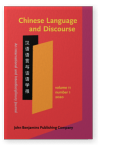Vol. 11:1 (2020) ► pp.5–30
Social class, language attitudes, and language use
A case study of Chinese university students
Few previous studies have examined the impact of social class on language attitudes and language use in mainland China. A total of 215 questionnaires were collected from a university in China for this study. The participants were classified into four social classes: upper middle class, middle middle class, lower middle class, and lower class. Then an individual interview was conducted with 10 students. Findings show that the students from the upper middle class had significantly lower attitudes toward local dialects and they had the lowest percentage of current use of dialect at home. The study adds evidence to findings of previous studies that local dialects might face certain danger of maintenance. It also shows that this change would start from people from the upper middle class. The study also points out a possible future tendency that social class privilege will play a more significant role in English learning and education.
Article outline
- 1.Introduction
- 1.1Language attitudes and social class
- 1.2Previous research of language attitudes towards prestige
- 1.3Previous research of language attitudes and language use in mainland China
- 2.Social class division
- 3.Framework of language attitudes of this study
- 4.Methodology
- 4.1Participants
- 4.2Questionnaires
- 4.3Interviews
- 5.Results
- 5.1Language attitudes
- 5.2Language use
- 5.3Interviews
- Using Putonghua at home
- Using local dialects at home
- Using both Putonghua and dialects at home
- 6.Discussion
- 7.Conclusion
- Acknowledgements
- Notes
-
References
This article is currently available as a sample article.
